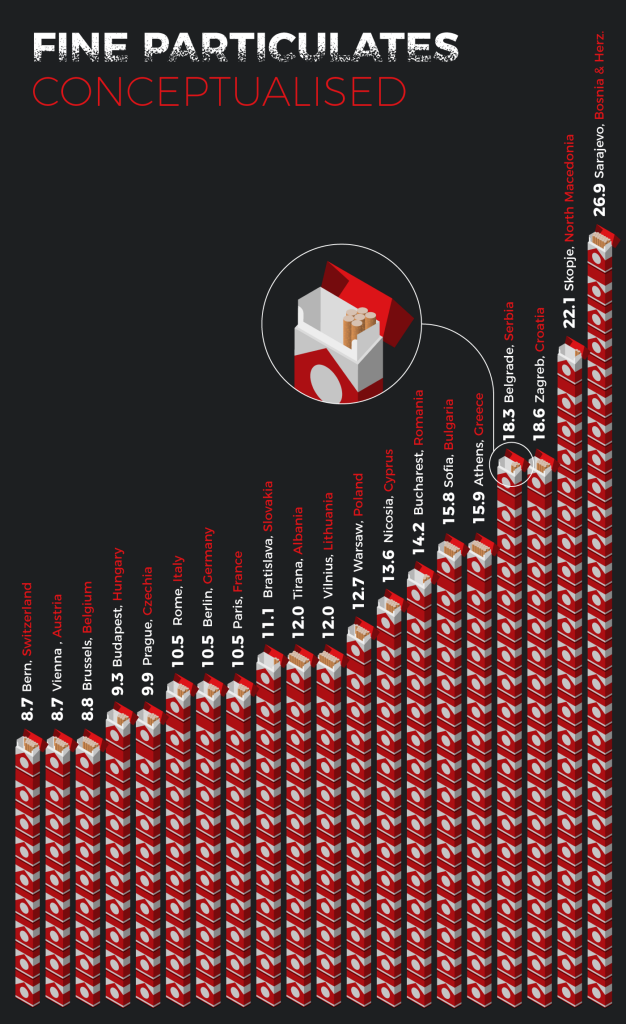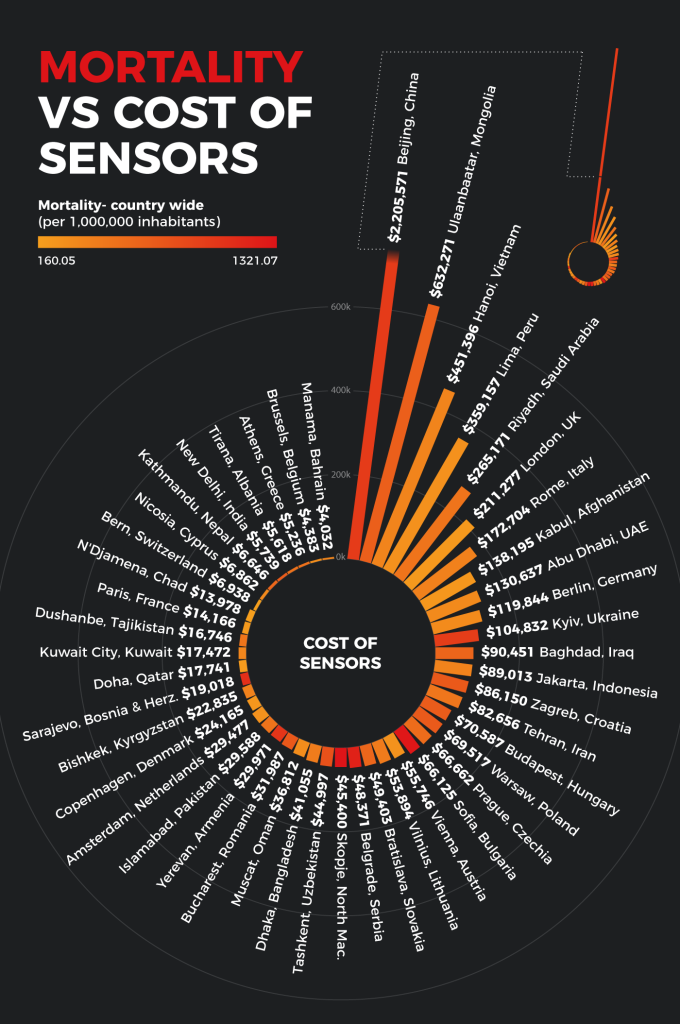Fine Particulate Exposure in Europe, Conceptualised. Air pollution is one of the largest environmental health risks facing European populations.
504
The EU imposes a limit of 25µg/m3 of exposure to PM2.5 annually, with all European capitals falling below this except for Sarajevo and Skopje. However when it comes to the stricter WHO air quality guidelines (5µg/m3), all of the European capitals except for Tallinn, Estonia were at levels higher than this.
Information from EEA Europa indicates an increase in the risk of mortality of 8% for a 10 µg/m3 increase in concentrations of PM 2.5, with 22µg/m3 being roughly the equivalent of one cigarette. Our study found that the average European smokes the equivalent of 222 cigarettes annually, without even knowing it.

Sarajevo, the capital of Bosnia and Herzegovina, ranked highest in our study when it came to European countries, with a fine particulate matter exposure equivalent to individuals smoking 26.87 packs of cigarettes annually, or 538 individual cigarettes. The country also had the fourth-highest mortality rate per 1,000,000 inhabitants of the 47 countries we studied.
Skopje, North Macedonia placed second in our study, with fine particulate exposure the equivalent of residents smoking 22 packs of cigarettes annually, or 1.20 cigarettes daily. This corresponded with the country having the highest mortality rate in association with air pollution of all of the countries that we studied, with a rate of 1,321 deaths per 1,000,000 inhabitants being attributed.
Falling within some of the lowest European particulate exposure and ranking outside of this visualisation were London (UK) with an annual equivalent of 7.96 packs of cigarettes or 159 individual cigarettes, Madrid (Spain) with 7.88, Dublin (Ireland) with 5.88, and Nordic regions. Copenhagen (Denmark) had an equivalent of 7.21 packs annually or 144 individual cigarettes, Oslo (Norway) had 5.72 annual packs, Stockholm (Sweden) had 5.64, and Helsinki (Finland) had 4.56.

Many countries have air pollution reduction plans in place, however, given society’s acceptance of burgeoning technology and the growing development of smart cities, IoT sensors could be a viable solution for hyperlocal real-time monitoring to better refine strategy and allow citizens to make informed decisions.
Whether this is in the form of self-protection methods such as keeping windows closed, avoiding areas of high pollution and using a home air purifier, or even using an air purifying mask when out in public, this could enable citizens to have better control over their health.
Original data source: https://knowhow.distrelec.com/sustainability/secret-smokers-the-impact-of-fine-particulate-exposure/




